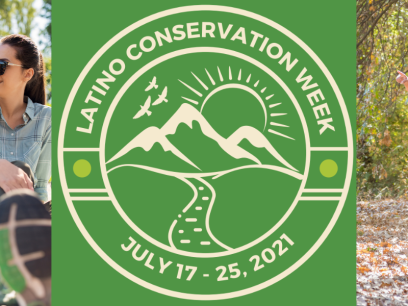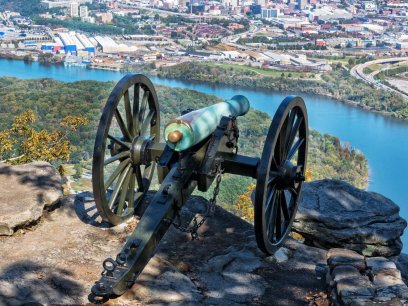
Record visitation to America's parks means being a good steward is more important than ever.
On November 18, 2020, a mysterious metal structure was spotted by the Utah Department of Public Safety's Aero Bureau in the red rock desert outside Moab. The exact location of the “monolith”—as it was dubbed on social media—was not initially disclosed by officials, who feared people might get stranded in the remote area while searching for it.
But in a matter of days, curiosity about the monolith and its origin went viral online (Was it art? Was it from space?) and internet sleuths tracked down its whereabouts on their own. Copycat monoliths quickly showed up in Romania, California, and New Zealand.
Hundreds, if not thousands, of people descended on Bureau of Land Management (BLM) land in Utah's Lockhart Basin to see the original for themselves. The human impact on the area soon became apparent. The desert canyon where the monolith was placed had no trails, no trash cans, no bathrooms, and no designated campsites. One reporter described the dust, chaos, and damage that visitors inadvertently left behind:
On my first visit to the sculpture, I had seen only scattered footprints. Now, a spiderweb of trails radiated in toward it from every direction. Dogs had left long white claw marks on steep rises of sandstone. Toilet paper blew across the ground.
Zac Podmore, Report for America corps member
BLM did not initially remove the structure because it was considered private property. However, on November 27—less than ten days after its initial discovery—some local citizens took matters into their own hands and removed the monolith in the middle of the night. All that was left was its triangular steel top and a hole carved into the slick rock.
While it is illegal to install structures or art on public lands without prior authorization, the disappearance of the monolith led to a debate over whether its removal was the right thing to do—as well as a larger conversation around public lands stewardship.
Human Impacts on Public Lands
The federal government owns and manages roughly 640 million acres—about 28%—of the 2.27 billion acres of land in the United States. Four major federal land management agencies administer most of this land: Department of the Interior's BLM, Fish and Wildlife Service, National Park Service (NPS), and the Department of Agriculture's Forest Service. Together, they represent some of America's most amazing places—and they are open to all.
For as long as the parks and other public lands have been in existence, there has been concern about the impact humans have on the ecosystems these agencies were established to protect. The popularity of public lands has increased in recent years, especially during the COVID-19 pandemic as people flocked to the outdoors for exercise and rejuvenation in a safe, socially-distanced environment.
Despite many parks being closed during the height of the pandemic, there were over 237 million recreation visits to NPS sites during 2020. Three parks had more than 10 million recreation visits that year: Blue Ridge Parkway, Golden Gate National Recreation Area, and Great Smoky Mountains National Park. This trend has continued into 2021: Yellowstone National Park recently recorded its busiest September on record and surpassed 4 million visits for the first time in its 149-year history.
While public lands are and should be for everyone, recent record-breaking attendance has put increased strain on the parks' infrastructure. Trash and graffiti have become a perennial challenge. Human disturbance impacts wildlife behavior. At the same time, aging facilities and limited resources have resulted in a backlog of maintenance work at many parks.
Supporting Restoration and Resilience
In 2020, NEEF launched the Restoration and Resilience COVID Recovery Fund in recognition of this reality. To date, over $200,000 in funding has been provided to support public lands that have been impacted by increased use during the COVID-19 pandemic.
Public lands sites across America have used this funding to mobilize community volunteers and educate participants about the importance of their actions and their relationship to the long-term sustainability of local public lands. The COVID Recovery Fund supports a variety of projects related to addressing environmental concerns, increasing access to public lands, restoring or enhancing park infrastructure, and preserving historic or cultural public land sites.
Check out our interactive story map for more information about the individual projects funded through NEEF's Restoration and Resilience COVID Recovery Fund.
Get Involved to Conserve Public Lands
The story of Utah's mysterious vanishing monolith is one example of how humans impact public lands. Preserving these special places is as much our responsibility as it is the federal agencies that oversee them. We can minimize our impact by following Leave No Trace principles. These seven principles have been adapted to apply anywhere and to almost every recreational activity, from remote wilderness areas and local parks to your own backyard.
Below are six additional ways you can get involved to protect public lands:
- Take the #RecreateResponsibly pledge to care for yourself, others, and the outdoors.
- Learn how to camp respectfully on public lands from the BLM.
- Report crimes including vandalism, dumping, and suspicious activity on public lands to the BLM or NPS.
- Put your talents, knowledge, skills, and abilities to work for your local park by participating in the NPS Volunteers-In-Parks program.
- This Giving Tuesday, support NEEF's environmental education work. Our mission is to make the environment accessible, relatable, relevant, and connected to the daily lives of all Americans to inspire empathy and connection to the natural world.
- Participate in NEEF's National Public Lands Day, the nation's largest single-day volunteer event for public lands, and volunteer in service projects designed to improve parks, forests, waterways, and community gardens across the country.


